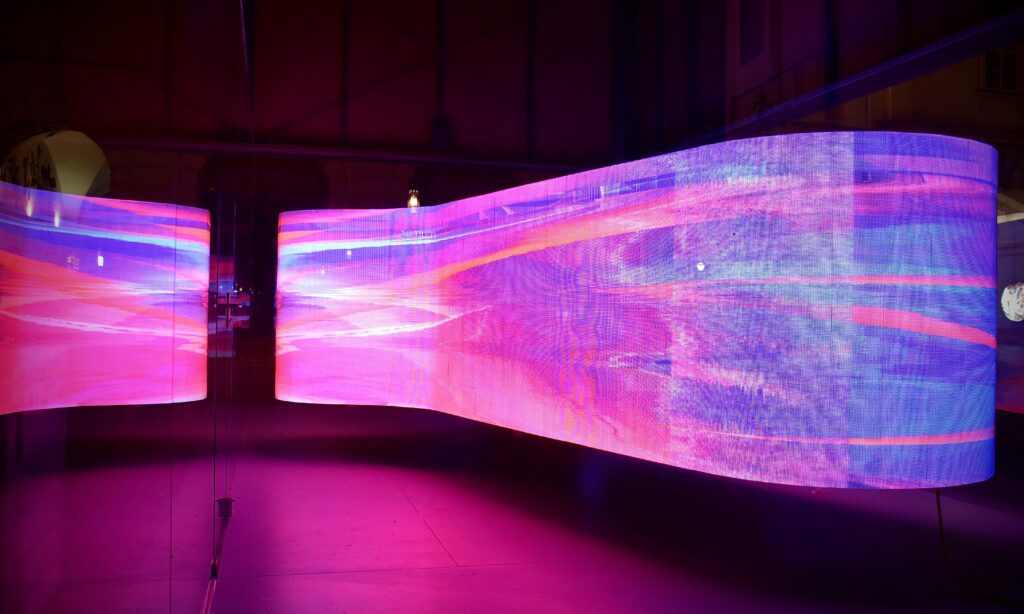Table of Contents
In the vibrant and ever-changing world of event planning, achieving perfect audio can sometimes feel like trying to solve a complex puzzle. Have you ever been to an event where the sound just wasn’t right? It’s frustrating, isn’t it? Well, that’s where wireless microphone systems come in, offering a solution that cuts through the noise-literally and figuratively.
These systems have become incredibly popular, and it’s no wonder why. They’ve transformed how we think about sound at events by ditching the tangled mess of cords. But, like every shiny new gadget, they come with their own set of advantages and drawbacks. Let’s take a closer look at the fascinating world of wireless microphones and see if they’re the right fit for your next event.
Why a Wireless Microphone? The Pros
1. Elevated Mobility and Flexibility
One of the first things you’ll notice with wireless systems is the newfound freedom they provide. Imagine you’re a keynote speaker or a performer-being able to move around freely without being tied to a spot by cables can make a world of difference. You can engage with the audience more effectively, whether you’re pacing across a large stage during a speech or moving through a crowd while performing. This kind of mobility is invaluable and it can be a game-changer, especially in dynamic settings.

2. Reduction of Cable Clutter
Remember those times when you almost tripped over a mess of cables on stage? With wireless microphones, those days are mostly behind us. By eliminating cables, you not only reduce hazards but also create a cleaner and more professional-looking stage. This kind of tidiness is not just visually appealing; it simplifies logistics and enhances safety. Cable management should not be overlooked when planning live events.
3. Versatility in Use
Wireless microphones come in different styles to suit a variety of needs. Whether it’s a handheld mic for general use, a lavalier mic for a hands-free presentation, or a headset mic for an active performance, there’s something for every situation. This versatility allows you to choose the right tool for the job, ensuring that your audio needs are met, no matter what the event demands.
4. Integration of Advanced Features
Modern wireless systems aren’t just about cutting cords; they’re packed with advanced features like encrypted transmissions to keep your audio secure and multiple frequency options to avoid interference. This means you can have more than one wireless microphone operating without any hiccups, which is particularly useful for panel discussions or multi-performer events. Digital Camera World does a deep dive into the features of the best wireless microphones for 2025.
5. Convenient Setup and Ease of Use
If you’ve ever been part of setting up an event, you know that time is of the essence. Wireless microphone systems often come with easy and quick setup options, allowing you to get everything running smoothly in no time.
6. Portability for On-the-Go Applications
Think about videographers or journalists covering events on the move. Systems like the DJI Mic 2 and Rode Wireless Pro are celebrated for their portability, making them ideal for capturing sound without the hassle of dragging along a bundle of cables.
7. Minimal Physical Constraint
The absence of cables not only improves aesthetics but also reduces the risk of tripping hazards, which is a crucial consideration in crowded environments like concerts or seminars. No one wants to be that person who takes a tumble because of a stray cable, right?
8. Compatibility with Modern Technology
Many newer wireless microphone models can seamlessly integrate with today’s digital tech, such as computers and soundboards. This compatibility ensures that they’re ready to work with the latest equipment found in most venues, providing even more flexibility.
9. Enhanced Sound Range
When properly set up, quality wireless microphone systems can deliver crystal-clear sound across large spaces. This makes them perfect for expansive venues like stadiums or exhibition halls, where clear audio is a must.
10. Professional Aesthetics
Let’s face it, appearances matter, especially in high-end events. The lack of wires gives a cleaner, more polished look, aligning perfectly with the sleek visual branding many events aim to achieve.
Check out our page on microphone rentals and let us help you out for your next event! Don’t forget, without speakers your microphones won’t be of any use.
Potential Pitfalls of Wireless Microphones? The Cons
1. Signal Interference
On the flip side, one of the most significant issues with wireless microphone systems is their vulnerability to interference from other devices. Imagine mid-performance, and suddenly there’s a burst of static noise or, even worse, the sound cuts out completely. It can be a nightmare, particularly in environments crowded with electronic signals, requiring careful frequency management.
2. Higher Initial Investments and Running Costs
Wireless systems generally come with a higher price tag than their wired counterparts. This includes not just the wireless microphones but also the necessary receivers and transmitters. Plus, ongoing costs for batteries and maintenance need to be considered. Read more here about audio visual budgeting for your event.
3. Technical Complexity and Reliability Challenges
While setting up has become easier, managing these systems still requires a certain level of technical know-how. Troubleshooting can be tricky, especially for complex events or for those who are new to the technology.
4. Decreased Sound Quality Potential
Although technology has come a long way, some audiophiles still argue that wired systems deliver superior audio fidelity. If you’re hosting an event where sound quality is of utmost importance, this is something to consider.
5. Battery Dependency
Relying on batteries means you have to be prepared for frequent changes or recharges. It can be a bit nerve-wracking to worry about a wireless microphone dying in the middle of an event, so having backups and a strategic plan in place is essential.
6. Range Limitations
Every wireless system has a maximum range, and going beyond it can result in signal dropouts. For large or spread-out venues, planning the placement of receivers carefully is crucial to maintain sound quality.
7. Potential Legal and Regulatory Issues
Using specific RF bands can sometimes conflict with local regulations. It’s essential to be aware of local laws to avoid legal issues or interference with public services.
8. System Complexity for Novices
For those new to the technology, managing multiple wireless devices can be daunting. Syncing various frequencies and components without prior experience can seem overwhelming.
9. Different Suitability for Event Types
While they offer many benefits, wireless systems might not be the best choice for every event. For smaller gatherings with tight budgets, the complexity and cost may outweigh the advantages.
10. Advancement Required
As technology continues to evolve, keeping up with the latest advancements is necessary to optimize performance. This can mean additional costs or the need to adapt to new systems.
Making the Decision: Wireless vs. Wired
Choosing between wireless and wired systems isn’t a one-size-fits-all decision. You need to weigh the pros and cons carefully based on factors like venue size, budget, technical expertise, and whether mobility or sound quality is your top priority. If you’re looking for more insights into event planning and technology integration, you might find these resources helpful: What makes a great AV partner and event planning essentials on WestWave AV’s blog.
Ultimately, the perfect solution depends on your unique situation. Sometimes, using a combination of both wireless and wired systems can strike the right balance, harnessing the strengths of each. For a broader understanding of audio visual technology, consider exploring Westwave AV or a deeper dive into the world of event microphones and beyond.
Wireless microphones have indeed revolutionized how we experience sound at events. By carefully considering their benefits and drawbacks in relation to your specific event needs, they could very well be the key to creating a memorable audio experience.
Still can’t decide on wireless or wired microphones for your event? Contact us today to set up a discovery call!


